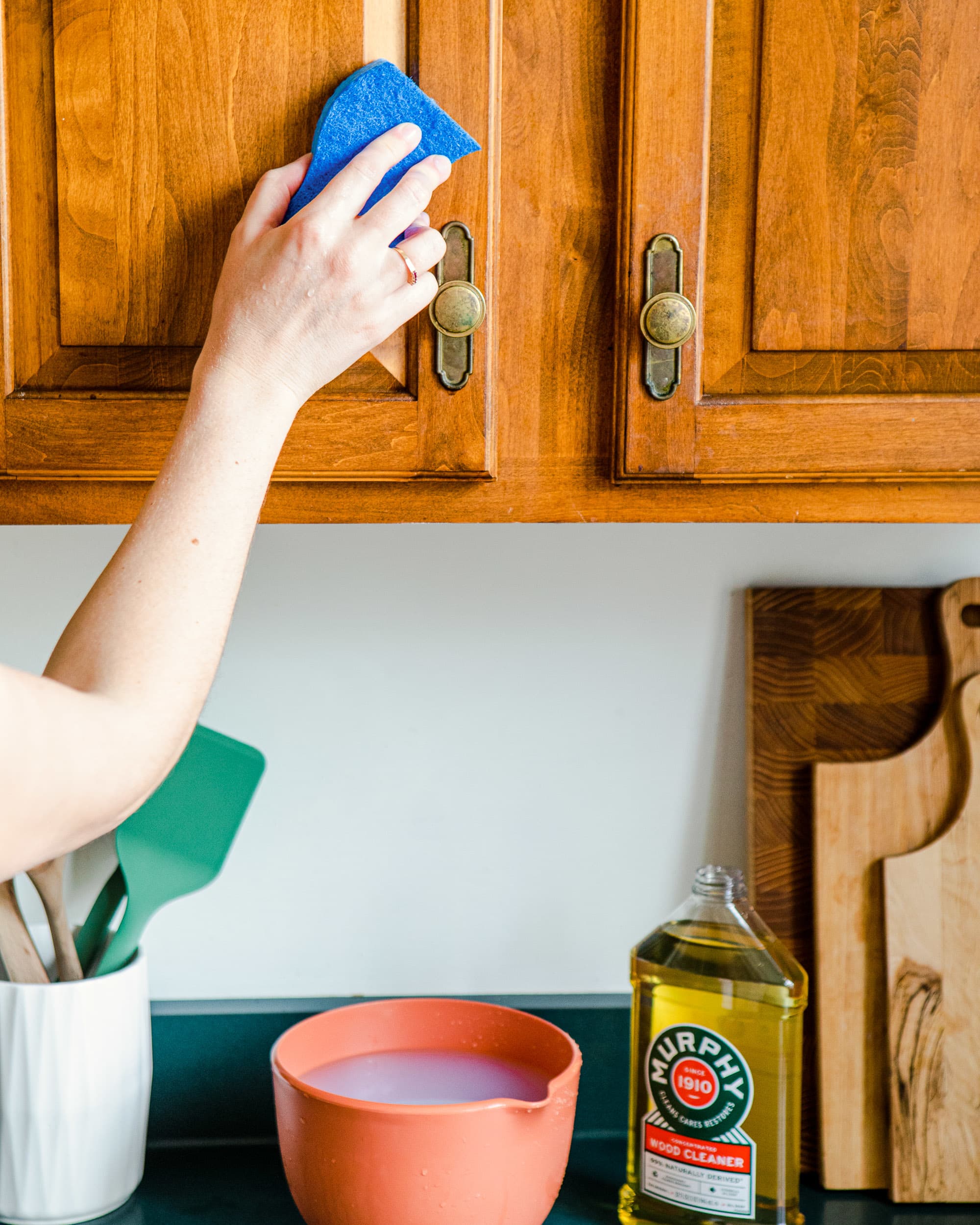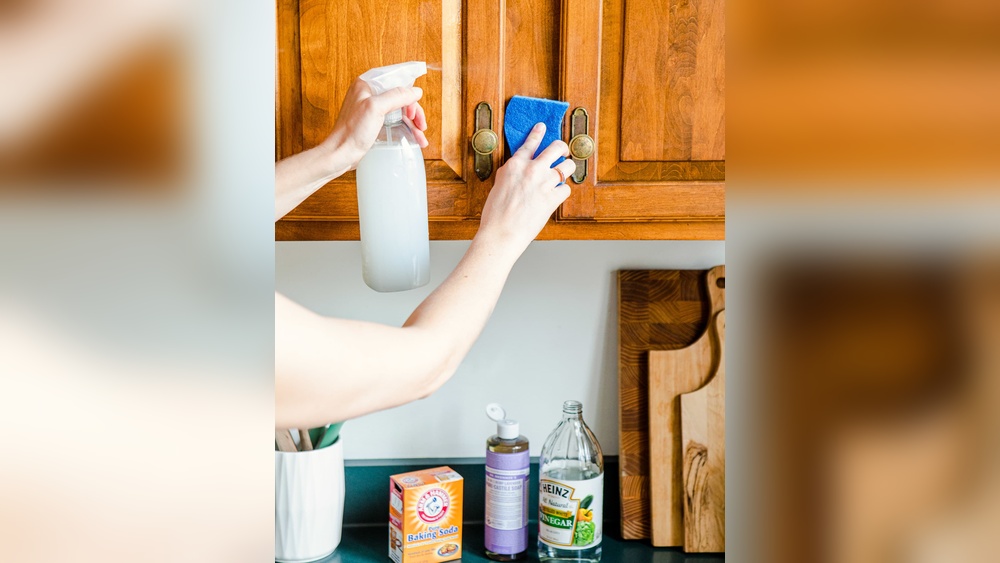Grease buildup on your kitchen cabinets can make your beautiful kitchen look dull and dirty. You know that sticky, oily film that’s hard to wipe away and seems to attract even more grime?
It’s frustrating, but the good news is you don’t have to live with it. If you want your cabinets to shine like new again, you need the right approach to break down and remove that stubborn grease. In this guide, you’ll discover simple, effective methods using common household items and easy steps that anyone can follow.
Ready to bring back the sparkle to your kitchen and impress everyone who walks in? Keep reading, because your cabinets deserve a deep clean that really works.
Common Causes Of Grease Build-up
Grease builds up on kitchen cabinets mostly from cooking. Oil splatters during frying or sautéing land on cabinet surfaces. Smoke and steam from hot food also carry grease particles. Over time, these particles stick and create a sticky layer. Cabinets near the stove get the most grease. Poor ventilation makes grease settle faster. Using oily hands or touching cabinets with food residue adds to the problem. Dust mixed with grease can make the surface look dull and dirty. Regular cleaning helps prevent thick grease layers. Without cleaning, grease hardens and becomes tough to remove. This build-up can damage the cabinet finish and attract bugs. Keeping the kitchen well-ventilated and wiping cabinets after cooking reduces grease build-up.
Basic Cleaning Supplies Needed
Basic cleaning supplies make it easy to remove grease from cabinets. Dish soap helps break down oily residue. Warm water is needed to mix with the soap for a gentle solution. A soft cloth or microfiber cloth works well to wipe surfaces without scratching.
For tougher grease, a sponge or soft brush can be helpful to scrub gently. A small bowl to mix soap and water is useful. Keep a dry cloth handy to wipe cabinets after cleaning to avoid water damage.
| Supply | Purpose |
|---|---|
| Dish Soap | Breaks down grease and oil |
| Warm Water | Mixes with soap to clean gently |
| Microfiber Cloth | Wipes without scratching surfaces |
| Sponge or Soft Brush | Scrubs tough grease spots |
| Dry Cloth | Dries cabinets to prevent damage |
| Small Bowl | Mixes soap and water easily |
Using Dish Soap And Warm Water
Start by mixing a few drops of dish soap with warm water in a bowl. Make sure the water is not too hot to avoid damage. Use a soft cloth or sponge for cleaning. Dip it into the solution and wring out the excess water.
Use circular motions to wipe the cabinet surfaces gently. This helps to loosen grease and dirt without scratching. Focus on greasy spots but avoid soaking the wood. After wiping, rinse the cloth in clean water and wipe again to remove soap residue.
Finally, dry the cabinets with a dry microfiber cloth. This prevents water damage and keeps the surface shiny. Repeat the process if the grease is still visible, but avoid harsh scrubbing.
Applying Baking Soda Paste
Mix baking soda and water to make a thick paste. Use about three parts baking soda to one part water. Stir well until smooth. This paste is gentle but effective for grease removal.
Apply the paste on greasy spots using a soft cloth or sponge. Let it sit for 10 to 15 minutes. This time helps to break down the tough grease.
For stubborn grease, scrub gently with a soft brush or sponge. Avoid hard scrubbing to protect the cabinet surface. Wipe off the paste with a damp cloth. Rinse the area well to remove any residue.
Dry the cabinets with a clean, dry cloth to avoid water damage. Repeat if needed for very sticky grease.
Commercial Degreasers And Alternatives
Choosing the right degreaser is key for effective cleaning. Commercial degreasers work well on tough grease. They break down oil quickly and make wiping easier. Always follow the instructions on the label for best results. Some degreasers are safe for all cabinet finishes, but others may cause damage.
Citrus-based cleaners offer a natural alternative. These cleaners contain oils from lemons or oranges that cut through grease. They are gentle on surfaces and leave a fresh scent. Use a soft cloth to apply and scrub gently to avoid scratches.
Food-grade mineral oil can help remove grease and protect wood cabinets. Apply a small amount on a cloth and rub it into the surface. This method also adds shine and prevents drying out. It works best on finished wood and can be used after cleaning.

Removing Thick Or Caked-on Grease
Use soft scraping tools like plastic spatulas or old credit cards to gently lift thick grease. Avoid metal tools to prevent scratches. Scrape slowly to loosen caked-on grease without damaging the cabinet surface.
Allow cleaning solutions to sit on the grease for several minutes. This helps to break down tough grease. Use warm water mixed with dish soap or a baking soda paste for best results. After waiting, wipe the area with a soft cloth.
Rinsing And Drying Cabinets
After cleaning the grease, use a damp cloth to rinse off any residue. This step removes leftover soap and grime. Make sure the cloth is only slightly wet to avoid soaking the wood.
Next, dry the cabinets using a soft, dry towel or microfiber cloth. This helps prevent water spots and moisture damage. Moisture can cause wood to warp or paint to peel.
Wipe the cabinets gently to avoid scratching the surface. Always dry every corner, including edges and handles. Proper rinsing and drying keep cabinets looking clean and fresh for longer.
Testing Cleaning Solutions Safely
Test cleaning solutions on a small, hidden part of the cabinet first. This helps avoid damage or discoloration. Use a soft cloth with the cleaner and rub gently. Wait for a few minutes to see if the finish changes or fades.
Always wear gloves to protect your hands during testing. Avoid using strong chemicals right away. Start with mild cleaners like dish soap mixed with warm water. If no damage appears, you can use the cleaner on larger areas.
Keep the area well-ventilated to avoid inhaling fumes. If the cabinet surface feels sticky or rough after testing, stop using that solution. Try another cleaner or a gentler method instead.
Tips To Maintain Grease-free Cabinets
Clean kitchen cabinets often to stop grease build-up. Use a soft cloth with warm water and mild dish soap. Wipe cabinets gently to remove fresh grease. For thick grease, mix baking soda with water to make a paste. Apply the paste on greasy spots, wait a few minutes, then scrub softly. Rinse with a damp cloth to remove leftover cleaner. Dry cabinets well to stop water damage. Avoid harsh chemicals that can harm cabinet finish. Regular wiping prevents sticky, oily surfaces. Use a microfiber cloth for best results. Keep kitchen well-ventilated to reduce grease. Wipe splatters quickly after cooking to stop grease from hardening. Small efforts daily save big cleaning later.


Frequently Asked Questions
How Do You Remove Icky Sticky Greasy Gunk From Kitchen Cabinets?
Mix dish soap with warm water, then scrub cabinets using a microfiber cloth in circular motions. For stubborn grease, apply baking soda paste, let sit, then scrub gently. Rinse with a damp cloth and dry thoroughly to prevent damage. Mineral oil or commercial degreasers can also help.
How To Get Tough Grease Off Kitchen Cabinets?
Mix warm water with dish soap and wipe cabinets using a microfiber cloth. For stubborn grease, apply baking soda paste, scrub gently, then rinse. Use commercial degreasers or mineral oil for heavy buildup. Always dry cabinets thoroughly to prevent damage and maintain cleanliness.
What Is The Best Degreaser For Kitchen Cabinets?
The best degreaser for kitchen cabinets is a mixture of warm water and dish soap. For tough grease, use baking soda paste or a citrus-based commercial degreaser. Always rinse with a damp cloth and dry thoroughly to protect cabinet surfaces.
Does Wd-40 Remove Grease From Kitchen Cabinets?
WD-40 can loosen grease on kitchen cabinets but may leave an oily residue. Use dish soap and warm water for safer, effective cleaning.
Conclusion
Removing grease from kitchen cabinets keeps your kitchen fresh and clean. Use simple ingredients like dish soap and warm water first. For tough grease, baking soda paste works well. Always wipe cabinets gently to avoid damage. Dry surfaces completely to stop moisture problems.
Regular cleaning prevents grease buildup over time. Clean cabinets improve your kitchen’s look and feel. Small efforts make a big difference in maintaining your space. Keep these easy tips handy for a grease-free kitchen.

